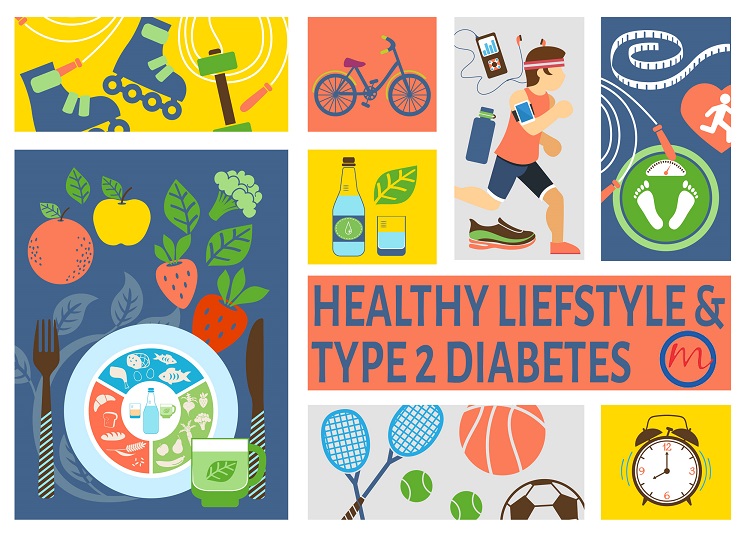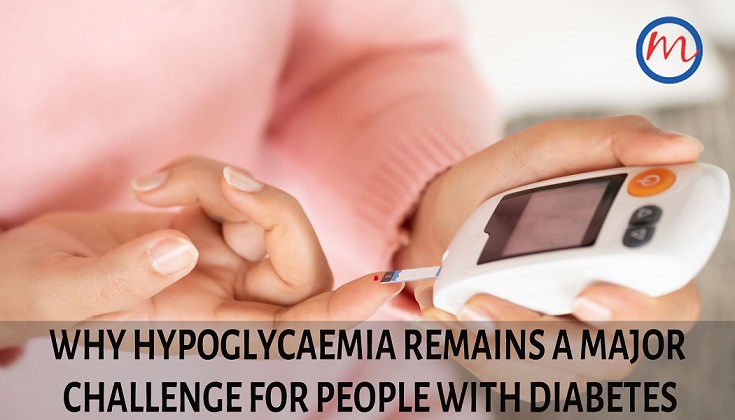We know that unhealthy lifestyle can bring on type 2 diabetes (T2D). But can a healthy lifestyle prevent, and even reverse, it? Over 20 years of medical research shows that it can. Much of this research has been impacted by the burgeoning field of lifestyle and heart disease science. In fact, heart disease is the number one cause of death among people with type 2 diabetes.
Here are some of the latest research and guidelines for people with diabetes. Just remember, anyone can adopt a healthy lifestyle. They are not expensive. Even modest improvements to your health can make a big difference and help you live a long, productive and healthy life. The bottom line is: when it comes to diabetes, there is nothing more urgent or more important than a healthy lifestyle.
Life’s Simple 7
About a decade ago, the American Heart Association (AHA) published “Life’s Simple 7,” or the seven lifestyle changes that can help one achieve ideal heart health. These were: eat better, get active, lose weight, stop smoking, reduce blood sugar, control cholesterol, manage blood pressure (pl see below for details). But a question remained: given the significant rise in heart disease risk in people with diabetes, would the Simple 7 hold true for diabetes?
A raft of recent studies suggest lifestyle changes do benefit type 2 diabetes and pre-diabetes. The latest, published in JAMA Cardiology (“Ideal Cardiovascular Health Metrics and Major Cardiovascular Events in Patients With Prediabetes and Diabetes,” 2019, Sep) probes how far the guidelines translate into improved heart health for people with diabetes and pre-diabetes. And this is the first study to show a positive association between ideal lifestyle factors and heart health in people who are at high risk for heart disease due to type 2 diabetes (T2D).
Genes Vs Lifestyle
What about genes? Recent years have seen major advances in the genetics of T2D and heart disease. And there is evidence of shared genetic background underlying the two. Examining sets of genome data on more than 250,000 people of South Asian, East Asian, or European descent, an international study led by researchers at the University of Pennsylvania (Nature Genetics, 2017, Sep) has found several new genetic pathways that link the outcome of both diabetes and heart disease.
This has opened up opportunities to lower the risk of both through lifestyle modifications as well as therapeutics. Already scientists are providing quantitative data about the interplay between genetic and lifestyle risk factors for heart disease. In a cross-sectional study across 55,685 participants, led by researchers from Harvard Medical School, adherence to a healthy lifestyle has been associated with a nearly 50 per cent lower risk in people at high genetic risk of heart disease (N Engl J Med, 2016 Dec).
Healthy Eating for Blood Sugar
The mantra for healthy eating for people with diabetes is balanced and moderation. The guidelines recommend a diet focused on fruits, vegetables, whole grains, legumes (peas and beans) and dairy products. Vegetables, fruits, and whole grains provide more nutrition per calorie than refined carbohydrates and tend to be rich in fibre. Your body digests high-fibre foods more slowly—which means a more moderate rise in blood sugar.
You need to pay special attention to your carbohydrate intake. For most people with diabetes, carbohydrates should account for about 45 per cent to 55 per cent of the total calories you eat each day. Choose your carbohydrates wisely—ideally, from vegetables, whole grains, and fruits. Avoid highly-refined carbs such as white bread and white rice, as well as candy, sugary soft drinks, and sweets. Refined carbs tend to cause sharp spikes in blood sugar, and can boost blood triglyceride levels.
Go for fibres: Studies show that packing in plenty of fibre in your daily diet reduces your chances of developing heart disease. Whole grains are rich in insoluble fibre, while beans, dried peas, oats and fruits are high in soluble fibre. Pay special attention to soluble fibres. They seem to lower blood sugar levels by improving insulin sensitivity, which may mean you need less diabetes medicine.
Follow The Simple 7
What are the lifestyle and metabolic health goals you should strive for? Let’s go through each of the seven risk factors that people can improve through lifestyle changes provided by Life’s Simple 7:
- Manage blood pressure. Try to stay within a cut-off of 120/80 mm Hg or lower
The combination of high blood pressure and T2D can greatly increase your risk of having a heart attack or stroke. Type 2 diabetes and high blood pressure also raises your chances of developing other diabetes-related diseases, such as kidney disease and retinopathy.
- Control cholesterol. Aim for total cholesterol below 200 mg/dL and LDL cholesterol below 100 mg/dl
High cholesterol contributes to deposition of fatty plaque on the inner walls of your arteries, leading to heart disease and stroke. By controlling cholesterol, the arteries get the opportunity to remain clear of blockages.
- Live an active life. Your goal should be 150 minutes of moderate-intensity activity a week or 75 minutes of vigorous activity.
This is the best thing you can do for yourself. Being active makes your body more sensitive to insulin. Physical activity also helps control blood sugar levels and lowers your risk of heart disease and nerve damage.
- Eat a healthy diet. Have 4-5 cups of fruits and vegetables a day.
There is no specific diet for diabetes. But what you eat makes a world of difference to your diabetes, your health and well-being. A healthy diet is all about variety, choosing different foods from each of the main food groups every day: Fruits and vegetables, starchy foods, protein foods, like beans, pulses, nuts, eggs, meat and fish, dairy and alternatives, oils and spreads.
- Lose weight. You should have a body mass index (BMI) of less than 25 or even less than 23 if possible
Shed those extra fat and unnecessary pounds and you will reduce the burden on your heart, lungs, blood vessels and skeleton. Body mass index has a strong relationship to diabetes and insulin resistance. Obesity triggers changes that cause fat tissue to release fat molecules into the blood, which in turn leads to reduced insulin sensitivity. Abdominal obesity is observed in most people with T2D. On average, abdominal obesity increases risk of type 2 diabetes more than two folds. ·
- Quit smoking. Smokers are 30–40% more likely to develop type 2 diabetes than nonsmokers.
It is now known that smoking causes type 2 diabetes. Cigarette smokers also have a higher risk of developing heart disease. The more cigarettes you smoke, the higher your risk. No matter what type of diabetes you have, smoking makes your diabetes harder to control. You are also more likely to have serious health problems from diabetes. If you smoke, quitting is the best thing you can do for your health.
- Reduce blood sugar. Strive to have your HbA1c under 5.7% if you have pre-diabetes, or below 7% if you have T2D.
Most of the food you eat is turned into glucose that your body uses for energy. Over time, high levels of blood sugar can damage your heart, kidneys, eyes and nerves. In fact, diabetes affects every organ of the body.




